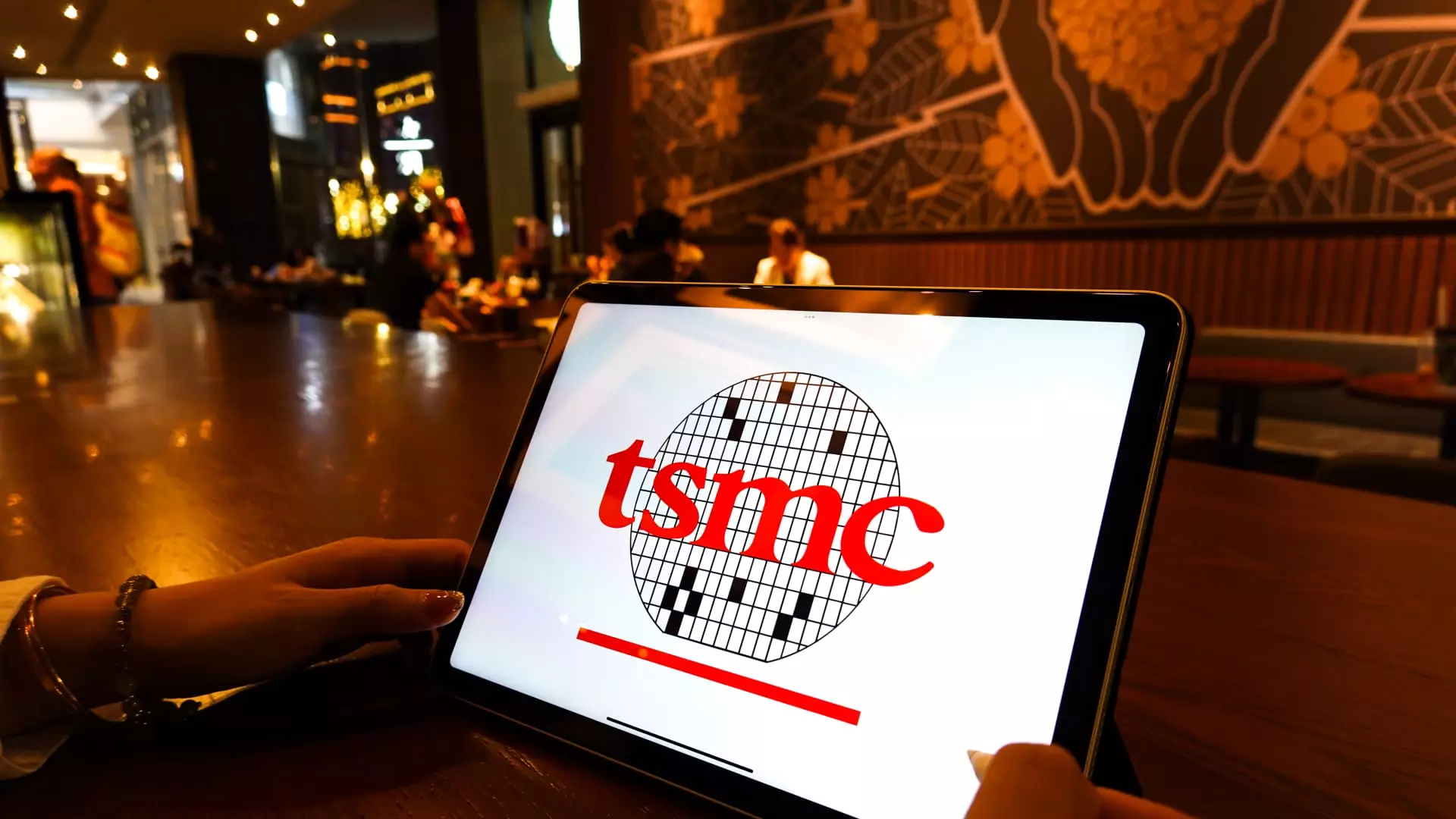Taiwan Semiconductor Manufacturing Company (TSMC), esteemed as the world’s leading producer of advanced semiconductors, has unveiled remarkable financial results for the third quarter of this year. The company’s performance not only reflects its robust operational capabilities but also highlights the accelerating demand driven by artificial intelligence (AI) applications. Let’s delve into the implications of TSMC’s recent financial reports, market trends, and the broader outlook for the semiconductor industry.
In its third-quarter earnings report, TSMC reported an astounding 54% increase in net profit, reaching a remarkable 325.3 billion Taiwanese dollars (approximately $10.1 billion). This figure significantly surpassed the consensus estimate of 300.2 billion Taiwanese dollars, indicating TSMC’s resilience and market dominance in a rapidly evolving landscape. The company’s net revenue for the quarter stood at $23.5 billion, marking a substantial 36% year-on-year increase. These figures underscore the health of the semiconductor industry, particularly the ongoing enthusiasm for AI technologies and their applications across various sectors.
The forecasts from TSMC are equally promising. The company aspires to achieve fourth-quarter revenues between $26.1 billion to $26.9 billion, translating to a projected sequential increase of 13% and an impressive year-on-year rise of 35% at the midpoint. Such optimistic projections signal TSMC’s confidence in sustaining the growth momentum bolstered by AI and smartphone demands.
C.C. Wei, TSMC’s Chairman and CEO, articulated that the demand for AI technologies has been substantial and “real,” positioning TSMC to capitalize effectively on this trend. This acknowledgement of the AI boom reflects a broader industry shift where integrated circuits designed specifically for AI applications are rapidly gaining prominence. The company’s advanced 3nm and 5nm technologies have become increasingly essential for meeting client needs, as major players in the technology sector pivot towards AI-centered product development.
Moreover, TSMC’s extensive network of clientele, which includes tech giants such as Apple and Nvidia, lends credibility to its claim of experiencing unparalleled growth within the industry. The acknowledgments from TSMC’s leadership about conversations with hyperscaler customers suggest that there is a robust collaborative environment leading to innovation and growth, indicative of a thriving ecosystem driven by mutually beneficial partnerships.
While TSMC’s prosperity paints a bright picture, there are underlying challenges and sentiments within the broader market. This quarter’s performance coincides with a downturn in the outlook from ASML, a significant supplier of semiconductor manufacturing equipment to TSMC, which projected lower-than-expected net sales. Such forecasts naturally invoke skepticism among investors about the sustainability of the AI boom. Concerns about the overall tech sector’s resilience raise questions about TSMC’s future trajectory, especially as companies assess the long-term returns on such substantial investments.
Foxconn’s CEO, Young Liu, echoed these sentiments by suggesting that while the AI excitement is palpable, it may require more time to evolve. This caution underscores the precarious nature of technological fads, where unbridled optimism can quickly turn into unpredictability if growth stagnates or fails to meet expectations.
In response to escalating demand, TSMC is strategically enhancing its manufacturing capabilities on a global scale. The company’s anticipated capital expenditure for 2023 is expected to exceed $30 billion, a move designed to expand its production footprint and cater to market needs effectively. This includes significant investments in new chip plants in Arizona, the United States, and the establishment of a factory in Japan. Such initiatives are emblematic of TSMC’s commitment to diversifying its manufacturing base and mitigating geopolitical risks.
As the race for semiconductor superiority intensifies, TSMC’s actions will play a pivotal role in determining the competitive landscape of the industry. The combination of impressive financial performance, an ongoing commitment to innovation, and strategic global investments positions TSMC favorably. However, the company must negotiate the rapidly shifting tides of technology and market sentiment to maintain its leading status amidst evolving challenges.
TSMC’s third-quarter results reflect a powerful convergence of driving factors—financial resilience, AI demand, and strategic planning—which could define the company’s future. Simultaneously, market players must remain vigilant, weighing optimistic data against a backdrop of uncertainty as the tech landscape continues to shift.

